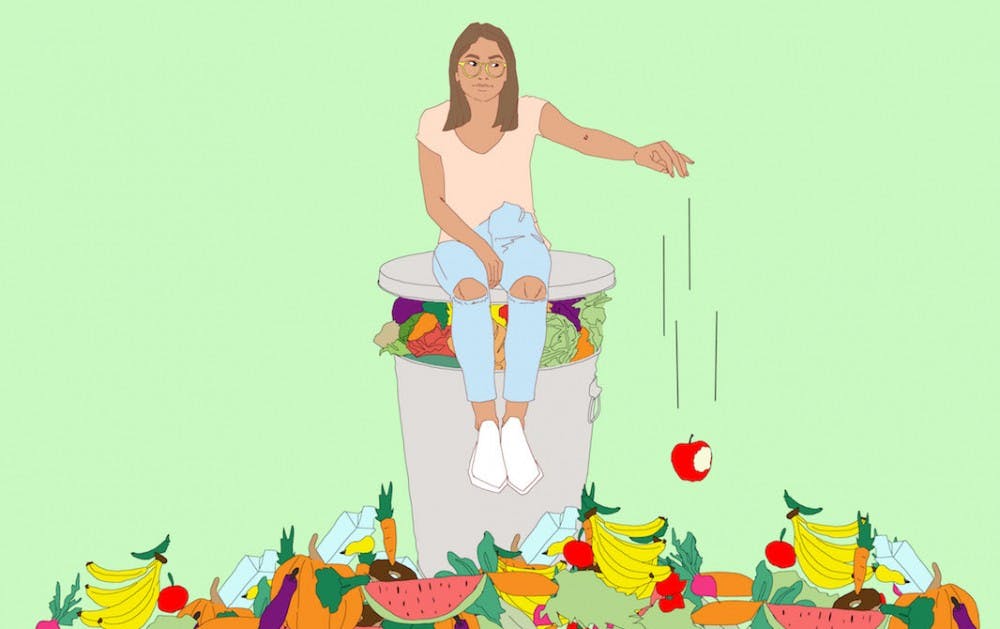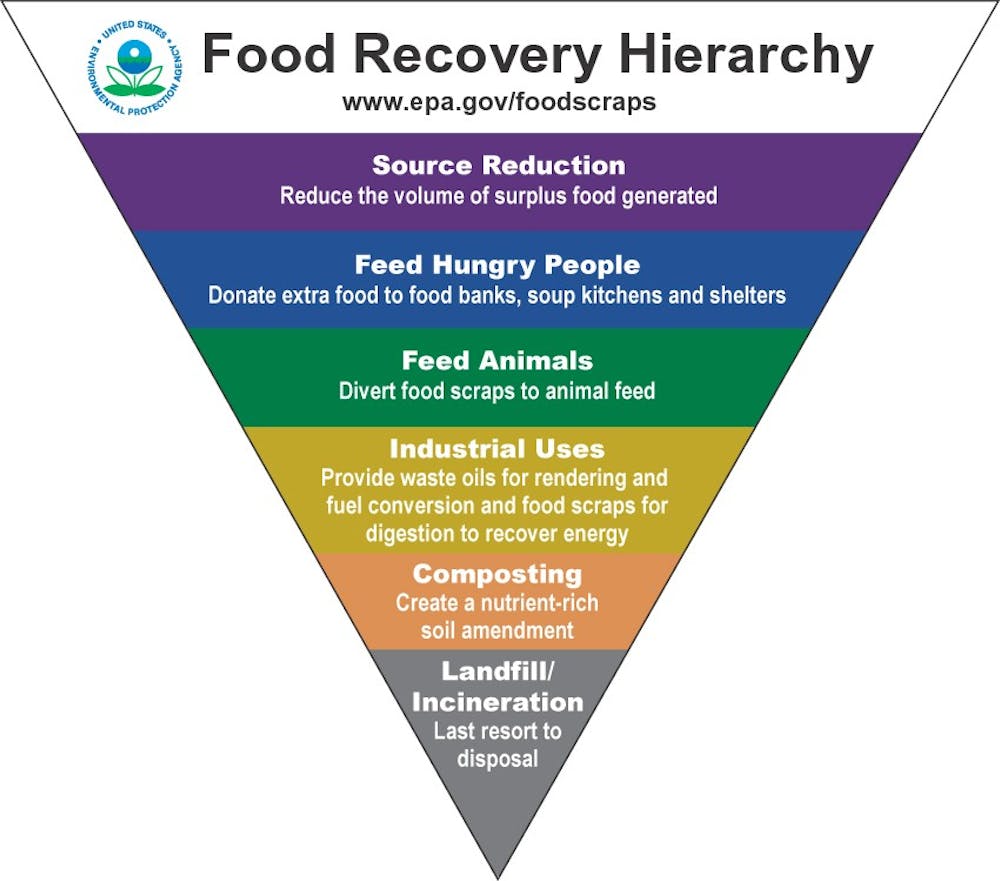Before you load up your plate the next time you're enjoying the luxury of buffet style dining, think about what happens to the food you don't finish.
Research from from the Food and Agriculture Organization of the U.N. shows that about one-third of food produced for human consumption is wasted each year. According to the Harvard T.H. Chan School of Public Health, upward of 40 percent of produced food is wasted and almost 95 percent of that food finds itself in landfills.
In June 2013, the Environmental Protection Agency released the Food Recovery Hierarchy. Similar to the food pyramid, but flipped upside-down, this gave organizations guidelines they could take in order to redirect wasted food. The graphic depicts the most beneficial way to dispose of food at the top of the pyramid and the least beneficial way at the bottom.
This was bolstered by a campaign enacted by the Trump administration in October 2018 titled "Winning on Reducing Food Waste." This initiative aimed to educate people and entities in food management as well as recognize outstanding commitments to food waste management.
A powerful way for students to be more sustainable is to simply understand the channels in which food becomes waste and how to remedy these. Here on campus, Sun Devil Dining has been spearheading its own initiatives in order to reduce food waste at ASU.
Some ways they are doing this include composting food waste, implementing a mixed materials recycling program, re-purposing food products such as used fryer oil and incentivizing consumers to only eat what they can by having trayless dining.
These actions are also helpful guidelines to follow when purchasing, preparing and eating food in everyday life off-campus as well.
Ultimately, one of the best ways to reduce food waste on a personal level is to only buy and eat what you can in that moment.
According to the Harvard Health Blog, it takes time before your brain can adequately register how satiated you are. Not only does eating slowly help you feel full quicker and reduces the amount of food you could waste, it also gives you time to enjoy food.
A study published in the journal of Endocrinology and Metabolism Clinics of North America showed that giving yourself time to slowly chew and enjoy your food could also reduce your stress levels.
Additionally, the EPA has released tips on how to reduce personal food waste at home. Some of the easiest ways to do this are to simply be mindful of how much food you will be using each week when in the grocery store. Buying food in bulk may save money — but not if half of that food ends up in the trash.
Utilizing your freezer is also a key component in preserving perishable items and avoiding throwing moldy food in the trash.
Reducing your food waste does not have to mean becoming Captain Planet. Adopting simple habits in your everyday life can have a big impact on your carbon footprint.
Reach the reporter at mcharbel@asu.edu or follow @CharbelMilo on Twitter.
Like The State Press on Facebook and follow @statepress on Twitter.





